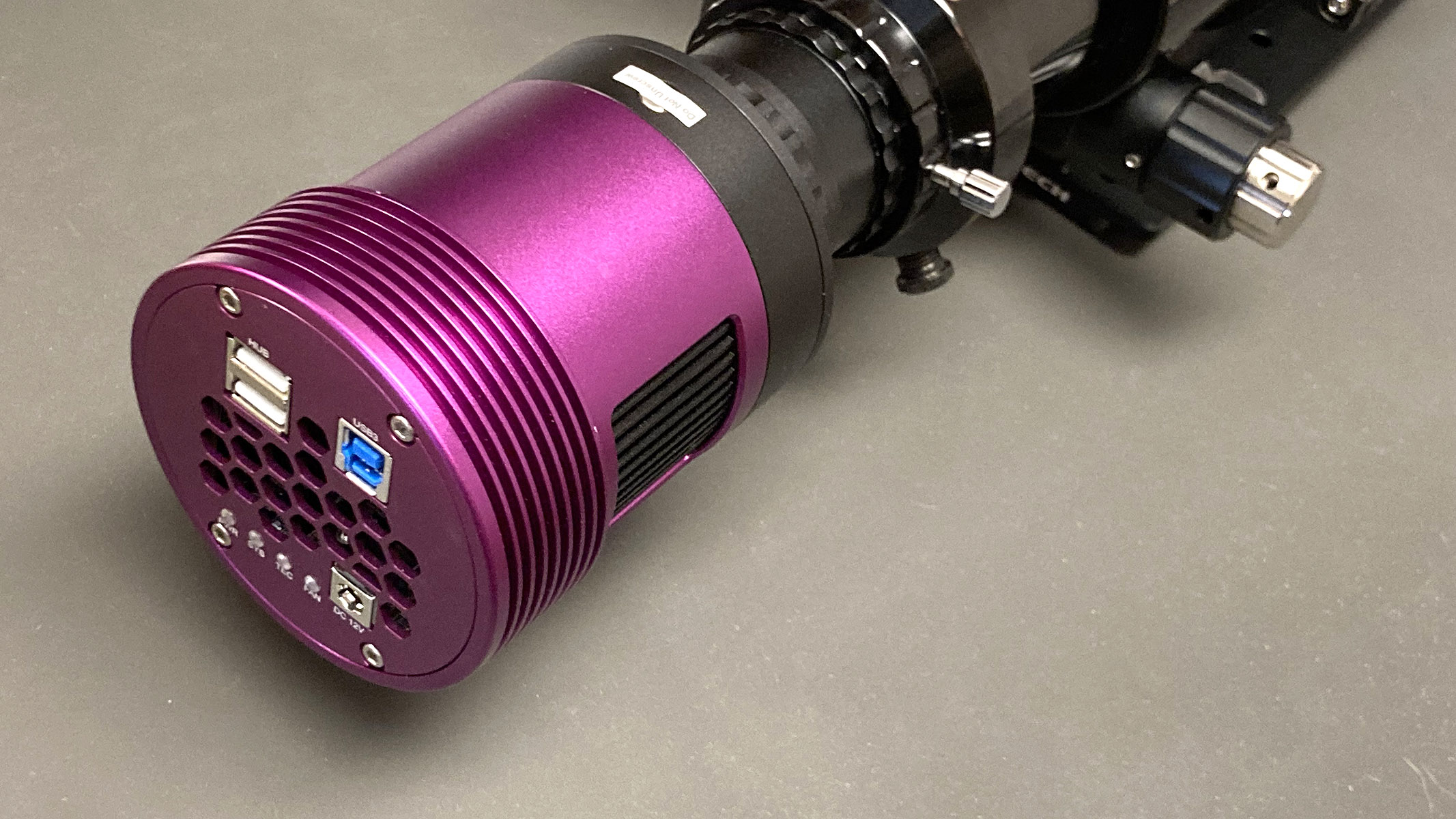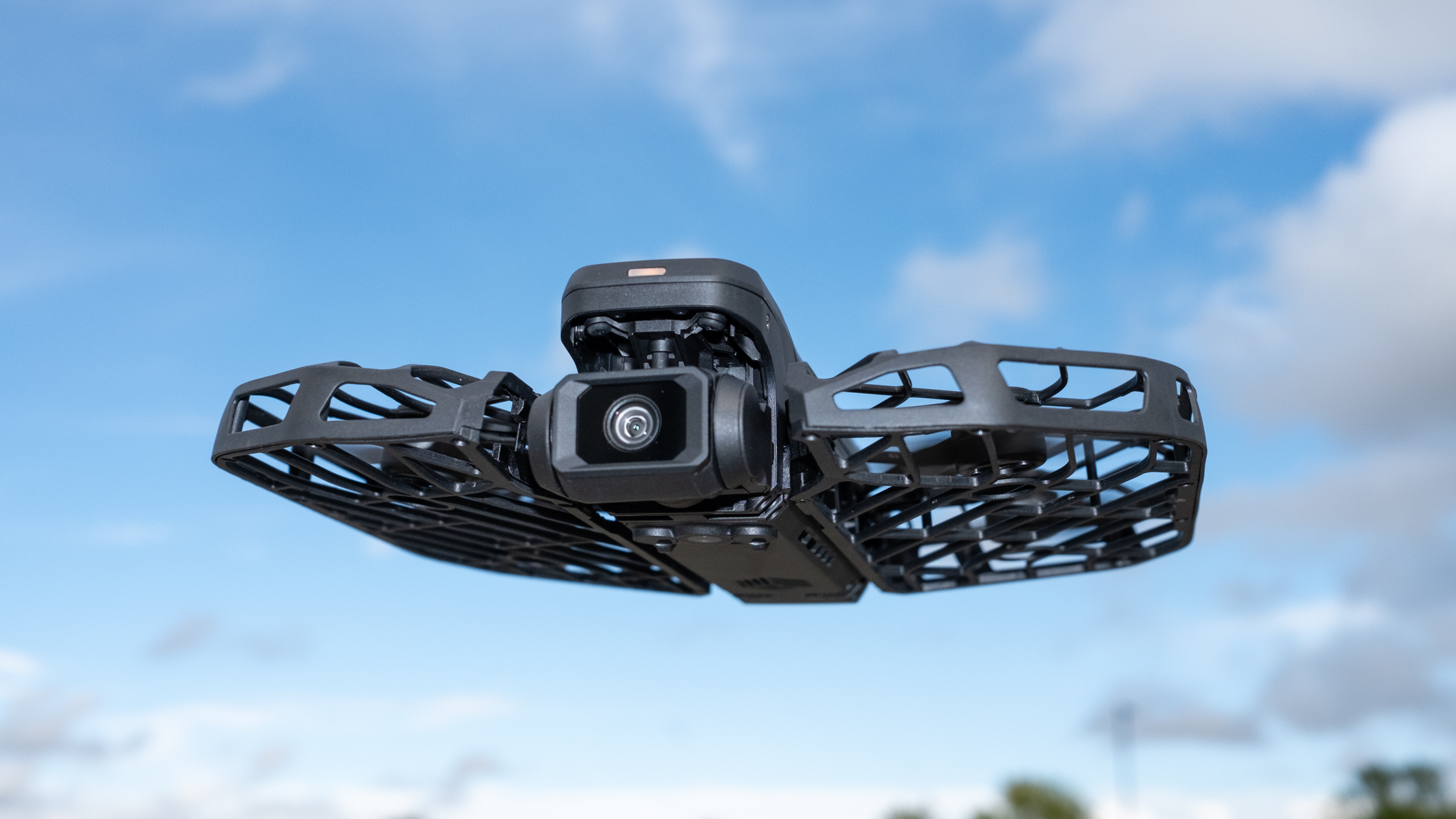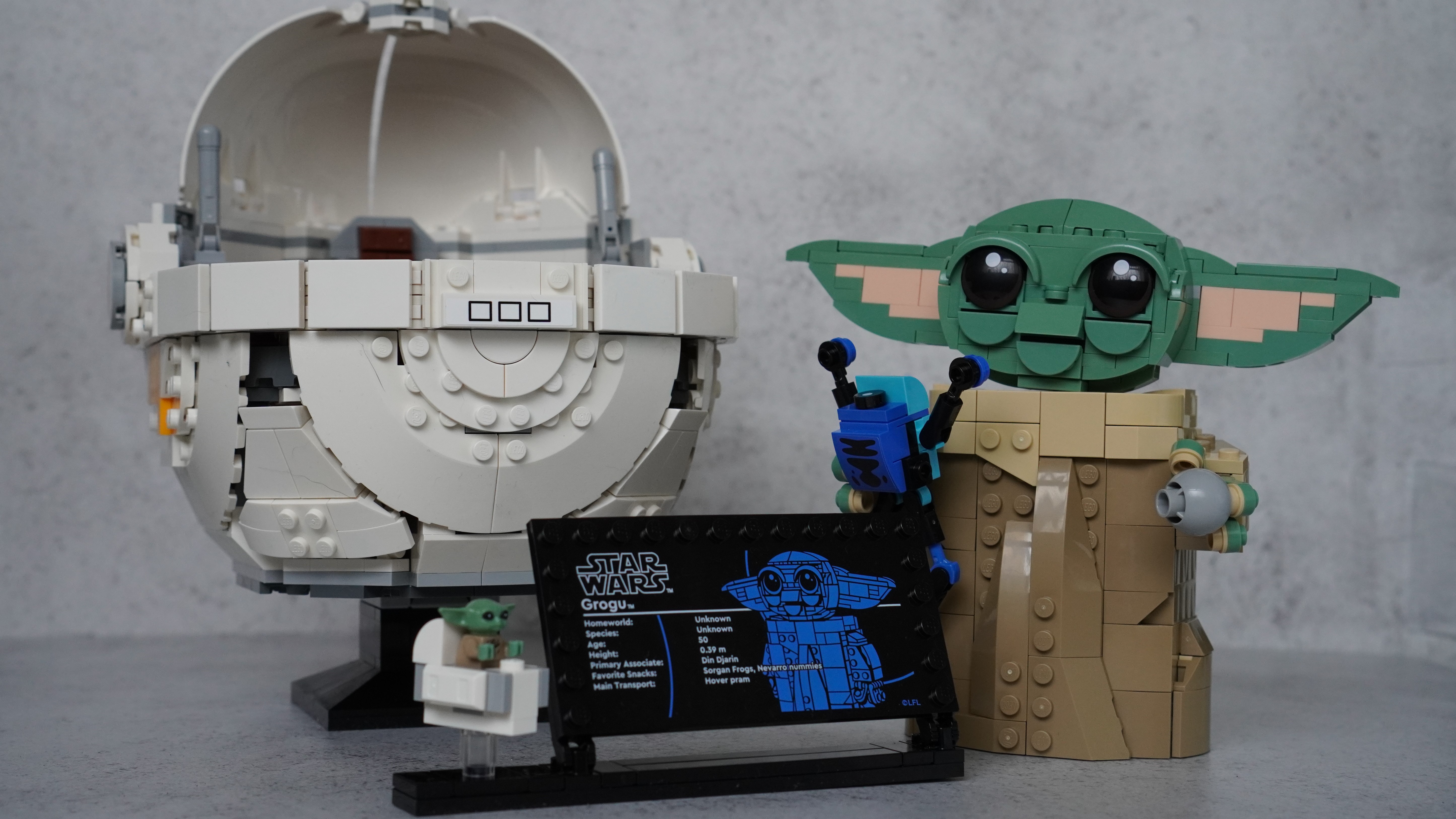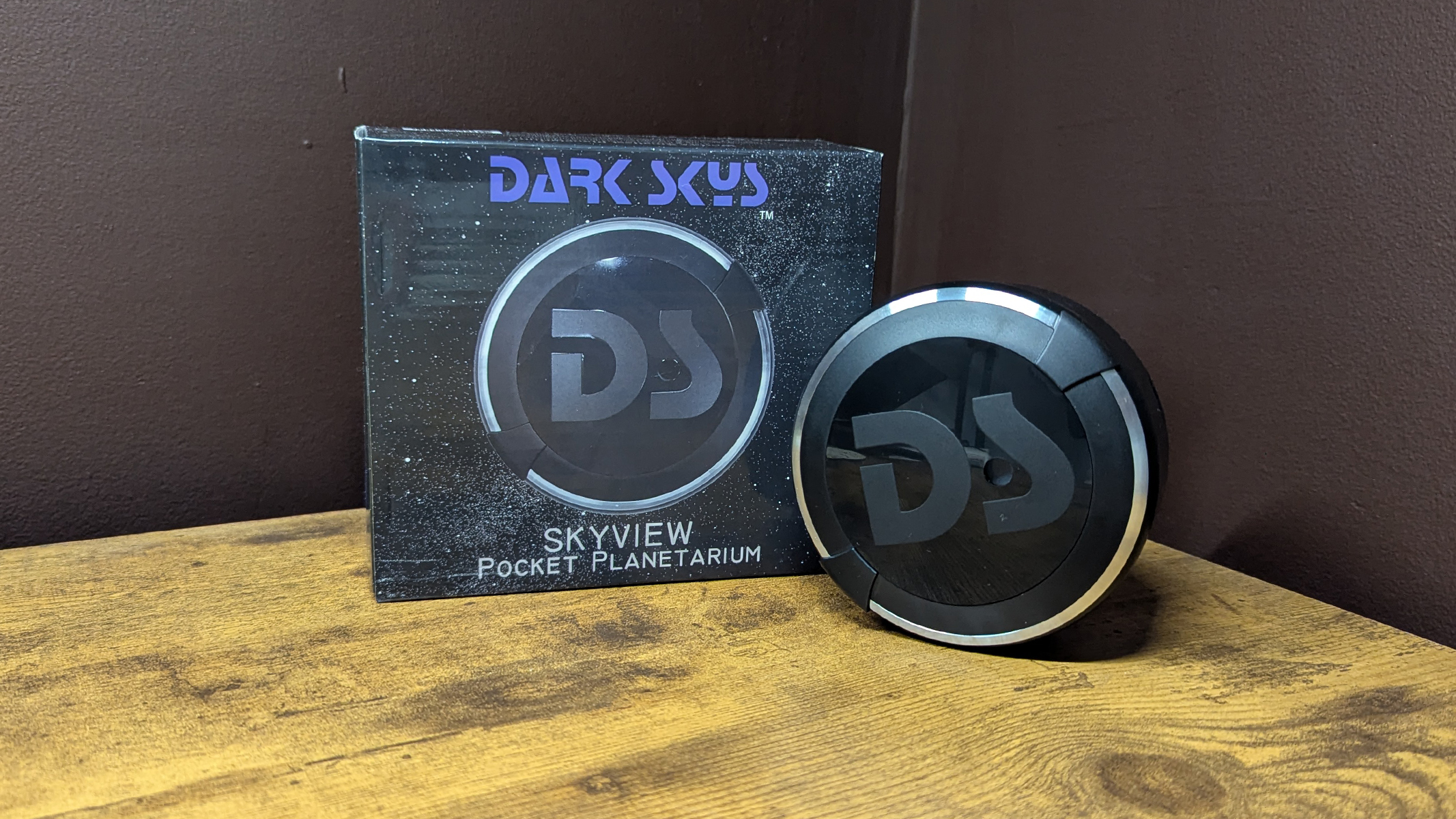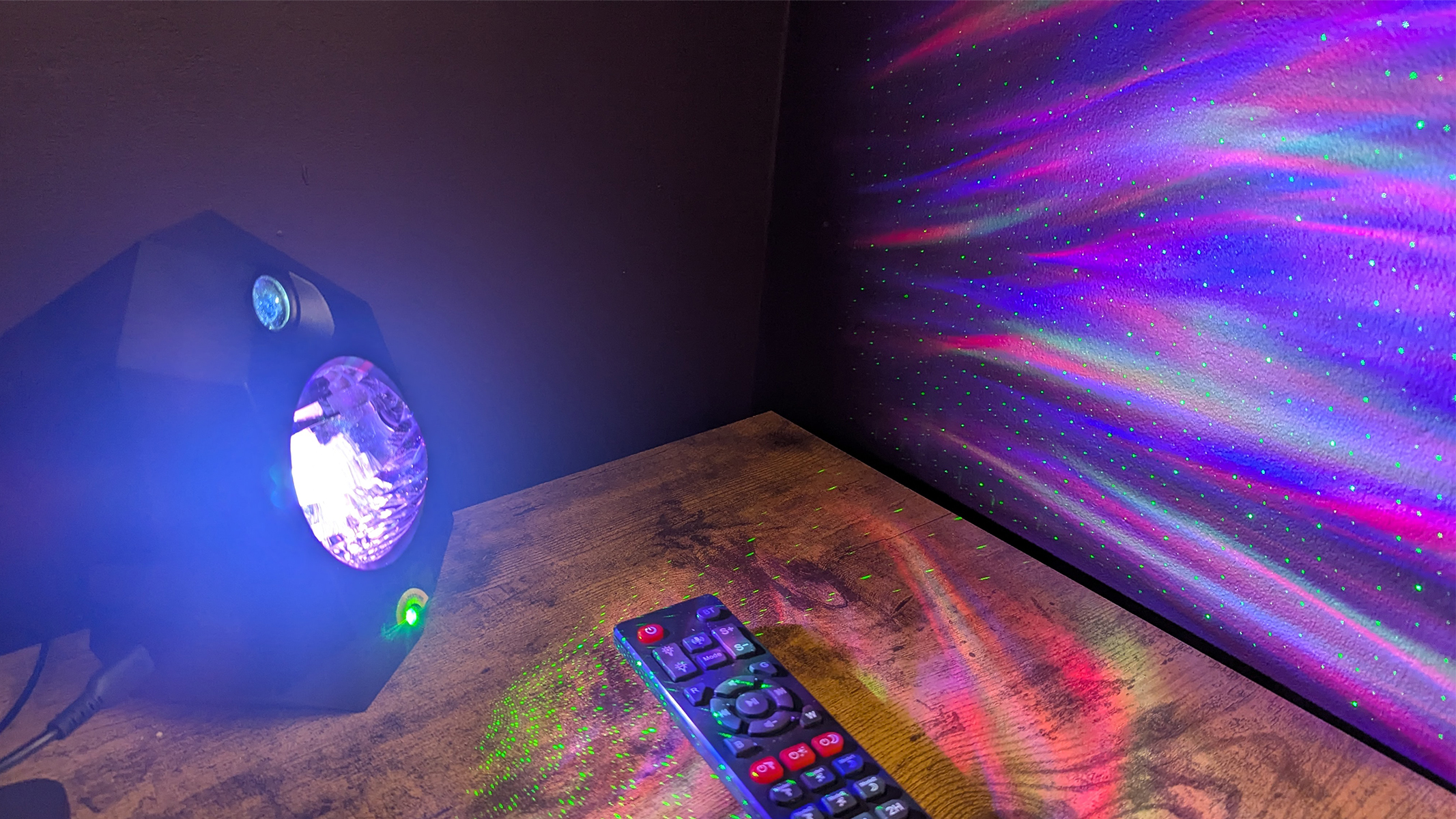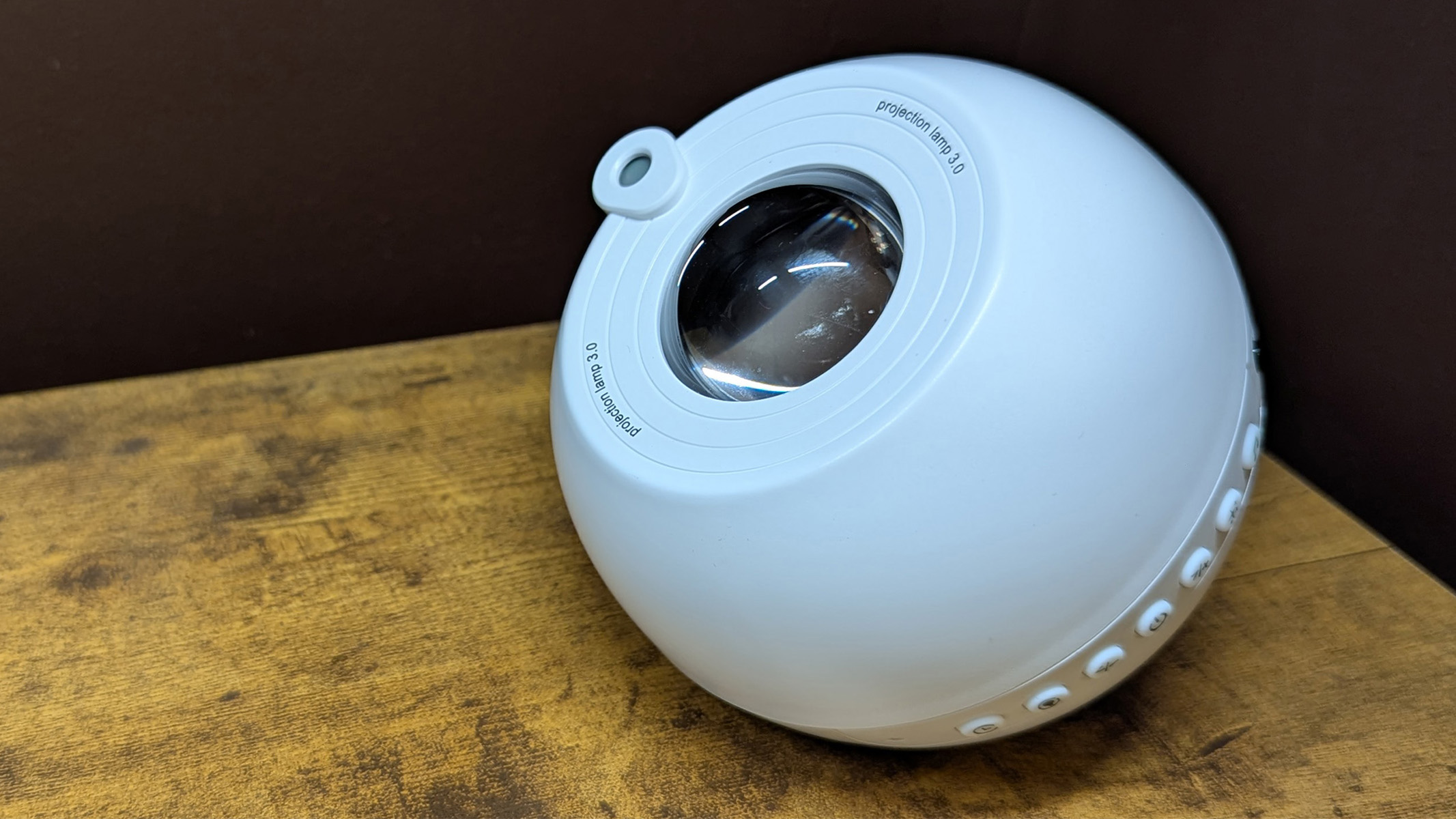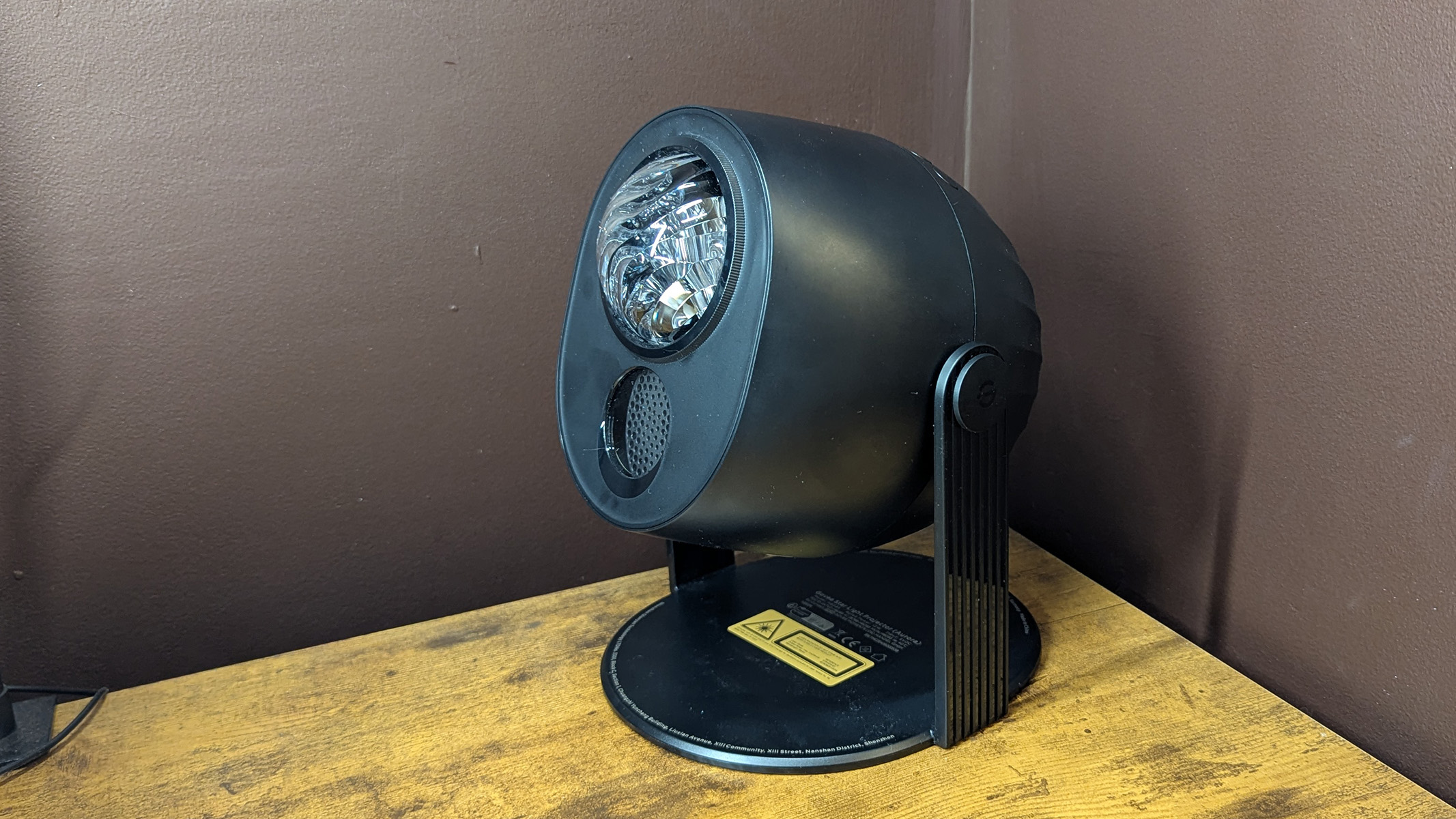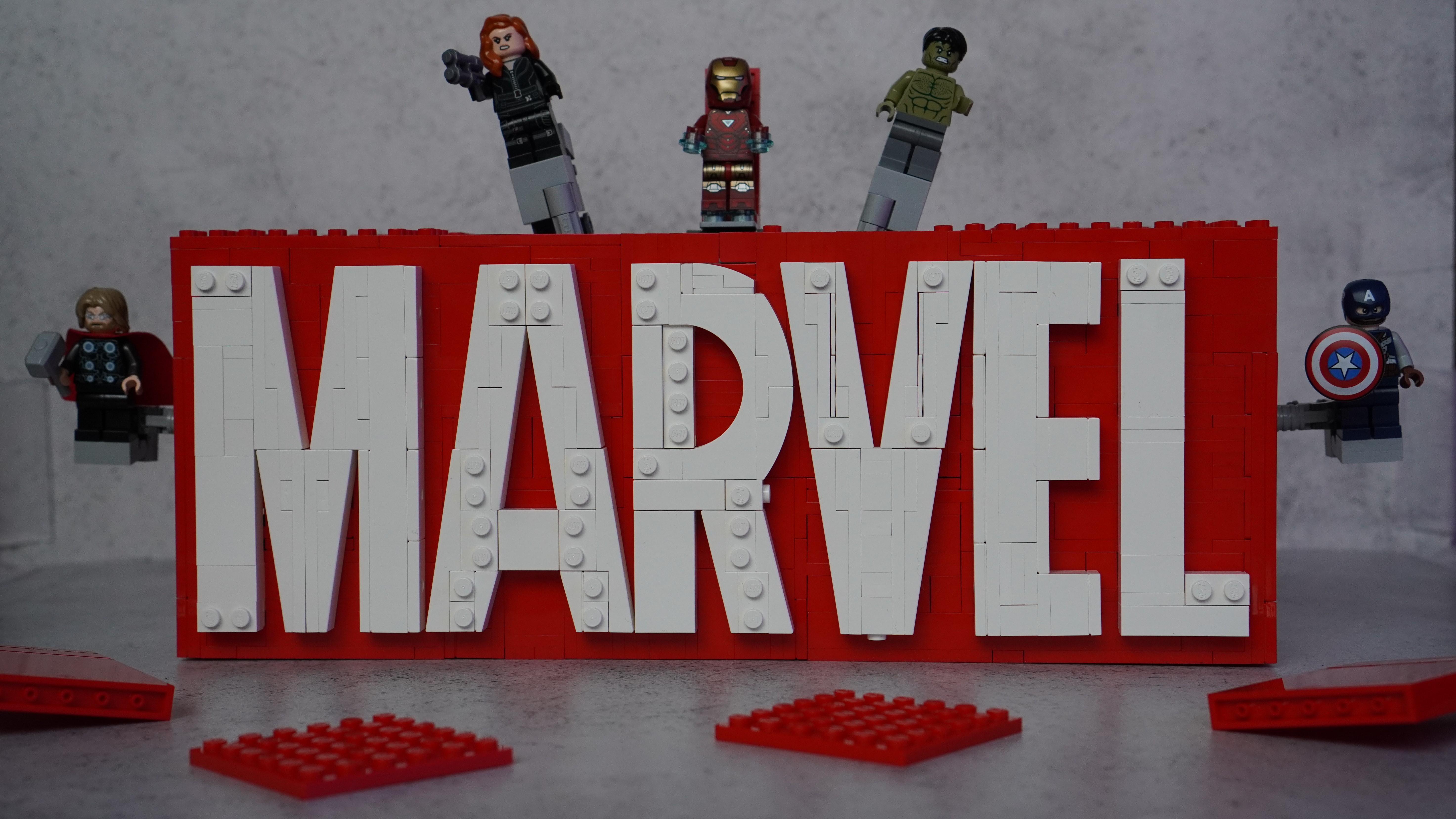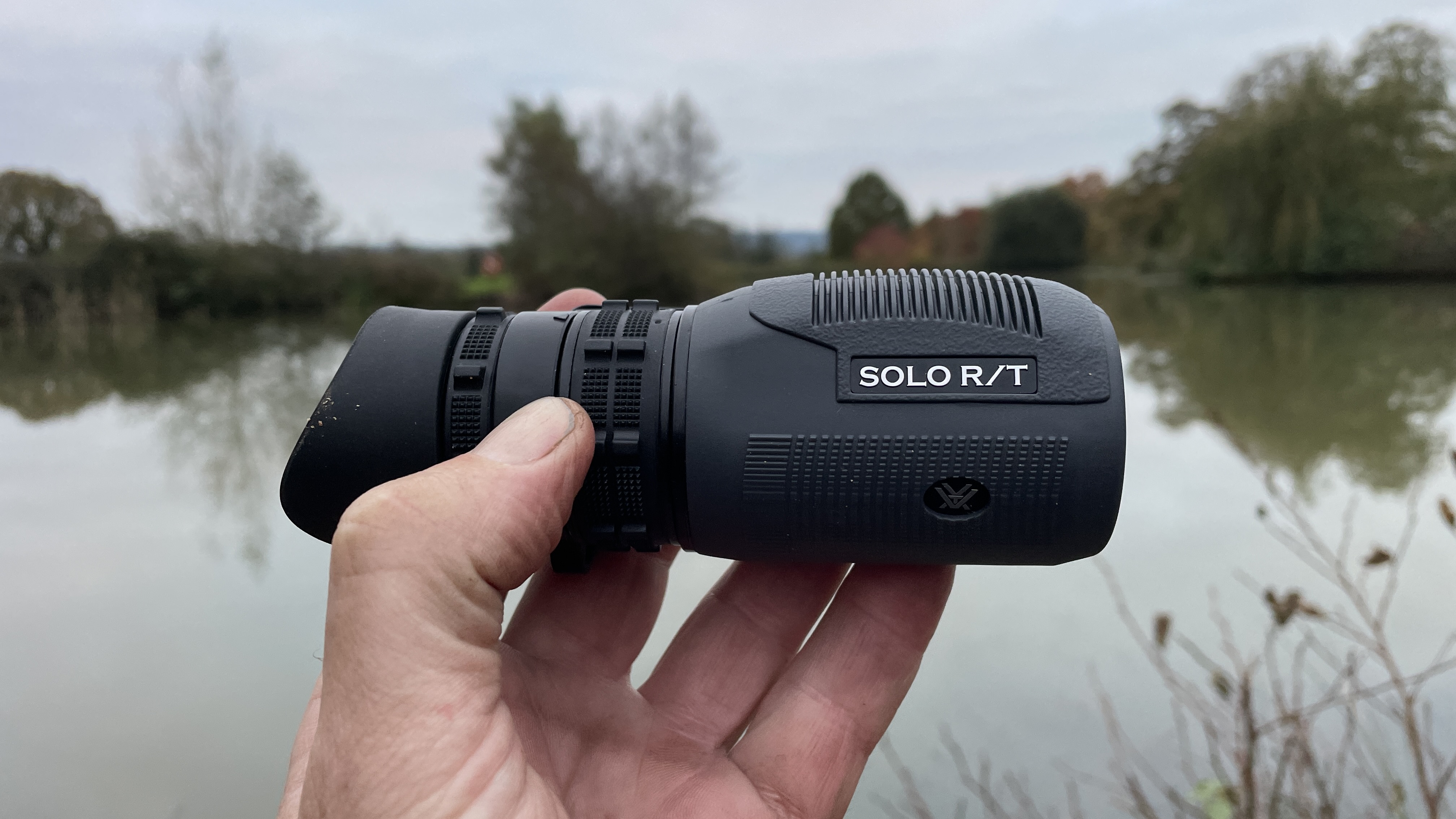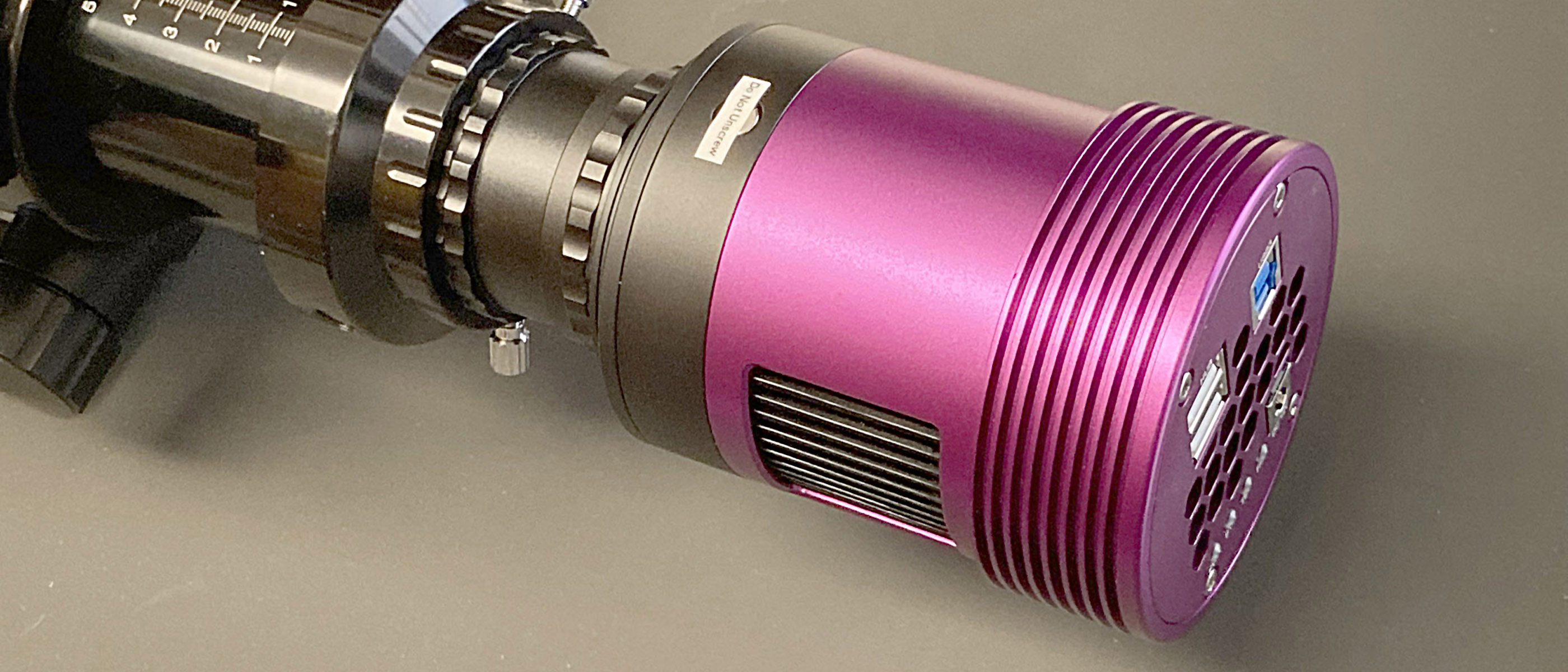Space Verdict
Pros
- +
13 projection discs
- +
Night-light
- +
Fairly quiet operation
- +
Small footprint
Cons
- -
Not rechargeable (requires cables)
- -
On-body controls only
- -
Questionable lifespan of projection discs
Why you can trust Space.com
Here at Space.com, we've reviewed more star projectors than we can count, and we're always thrilled to see new arrivals entering the market. With hundreds of options, finding the right star projector can feel overwhelming. That's why we seek out models that stand apart from the crowd, whether through innovative designs, advanced features or new functionality. We aim to uncover the most unique and exciting star projectors available so you can enjoy a truly enjoyable stargazing experience from your sofa.
Size: 6.7 x 6 x 5.8 inches (17 x 15.2 x 14.7 centimeters)
Weight: 1.7 pounds (771 grams)
Laser: No
Control: On-body
Rotation: Yes
Sleep timer: Yes
Speaker: No
Projection surface: 167 square feet (15.5 square meters)
This star projector is available from multiple distributors, all under different names. Ours happens to be from the Ainael Amazon store, but if you search for the product code "SKE-TKQ01," you will find it available from several retailers under slightly different names. Therefore, the pricing will vary; we've seen it range from $40 to $80.
Ainael Meteor and Galaxy Projector review
Ainael Meteor and Galaxy Projector: Design
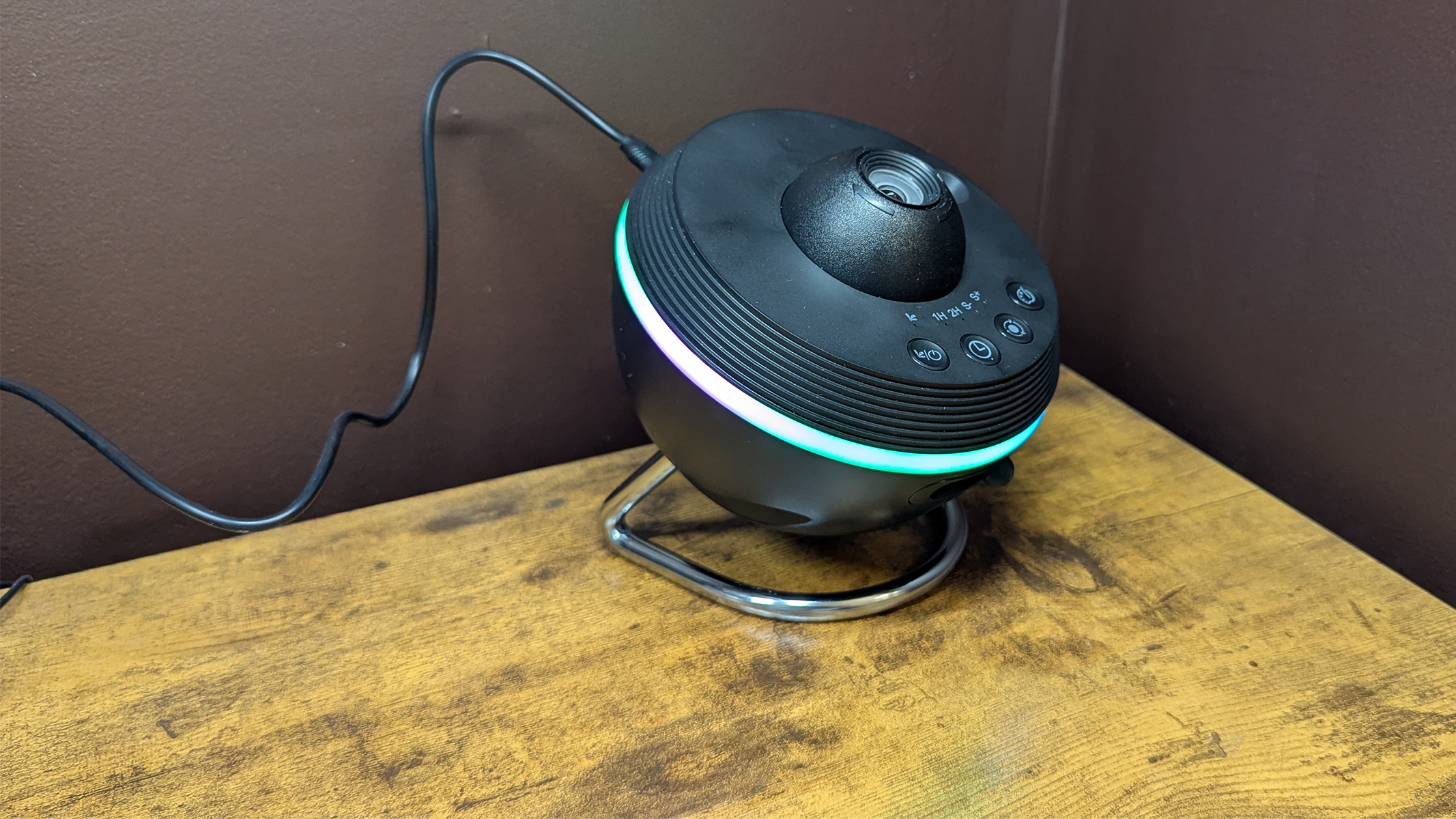
- Small footprint
- Two colorways
- 13 projection discs
We'll start by describing the packaging, as we typically do. That's because star projectors are popular to give as gifts, and first impressions count. Often (but not always), the packaging reflects the quality of the product in the box. The packaging here is just OK. It isn't going to win any design awards, and it's a little old-fashioned, with those questionable grammar translation oddities we've mentioned in previous reviews. Our box arrived looking a bit beat-up (we bought it directly from Amazon) — so not the best first impression — but it did the job of protecting the unit inside.
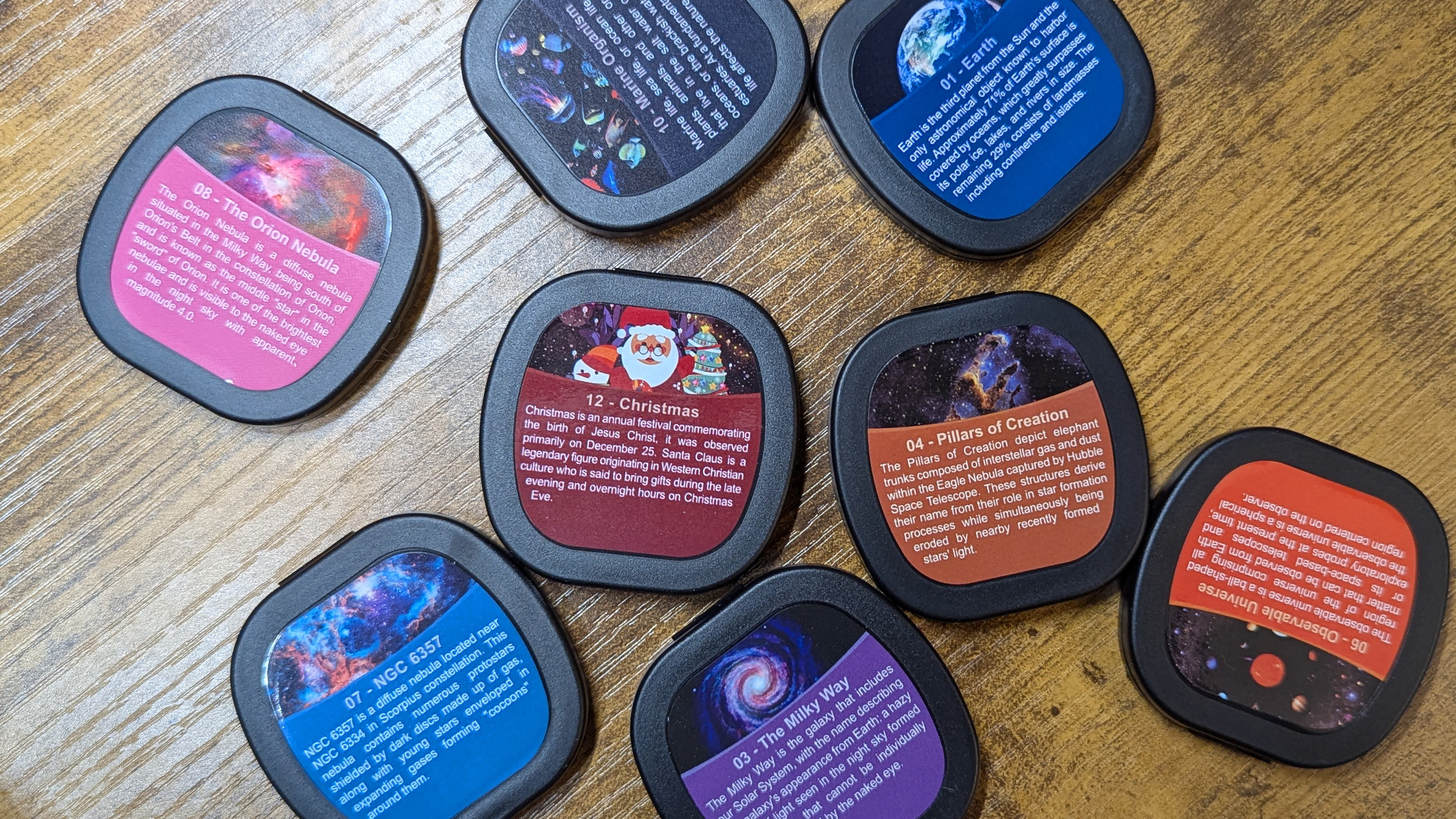
The projector, which is available in black or white plastic, arrives fully assembled, so it can be used right out of the box; it takes mere seconds to plug it in and start using it.
Thirteen different projection discs are supplied: one in the unit and two boxes of six discs. That's more generous than the selections from other models, like the Pococo Galaxy projector, which comes with only two. The first box of discs contains space-themed images, like the Orion Nebula, the NGC 6357 nebula, Earth and the Milky Way. The second box contains novelty discs, like Valentine's Day, dinosaur, Christmas and marine organisms.
Each disc is housed in its own plastic case, with a description of the image on the front. It looks like there are 60 discs available to purchase in total. The user manual notes that the discs are combustible and you must remove them when the unit isn't in use and alternate them frequently.
The unit is a half sphere, with a protruding focus ring held on a small metal stand. The projector can pivot on the axis vertically to about 150 degrees, and of course, the whole unit can be physically turned 360 degrees horizontally.
The function buttons are on the unit itself. They allow you to control whether the projection is on or off, operate the sleep timer, and adjust the rotation. There's also a wheel on the side of the unit to adjust the "shooting star." The buttons aren't backlit. But there are only four, and there's no danger of turning on music or "white noise" and ruining the calming ambiance by accident (as there is with the Govee Star Light Projector, for example).
Ainael Meteor and Galaxy Projector: Performance
- Night-light mode
- Bright enough projection in the dark
- Quiet operation
The Ainael projector differs from others we've reviewed in that it doubles as a stand-alone night-light. The striplight that surrounds the unit can be used independently (with the projection turned off), and there are several color combinations to choose from. This would be ideal for a child's bedroom.
When the night-light is on and the projection is off, the operation is silent. It's only when the projection light is on that there is a very slight hum. It's very quiet, though, and shouldn't disrupt your favorite movie, game or, most importantly, sleep.
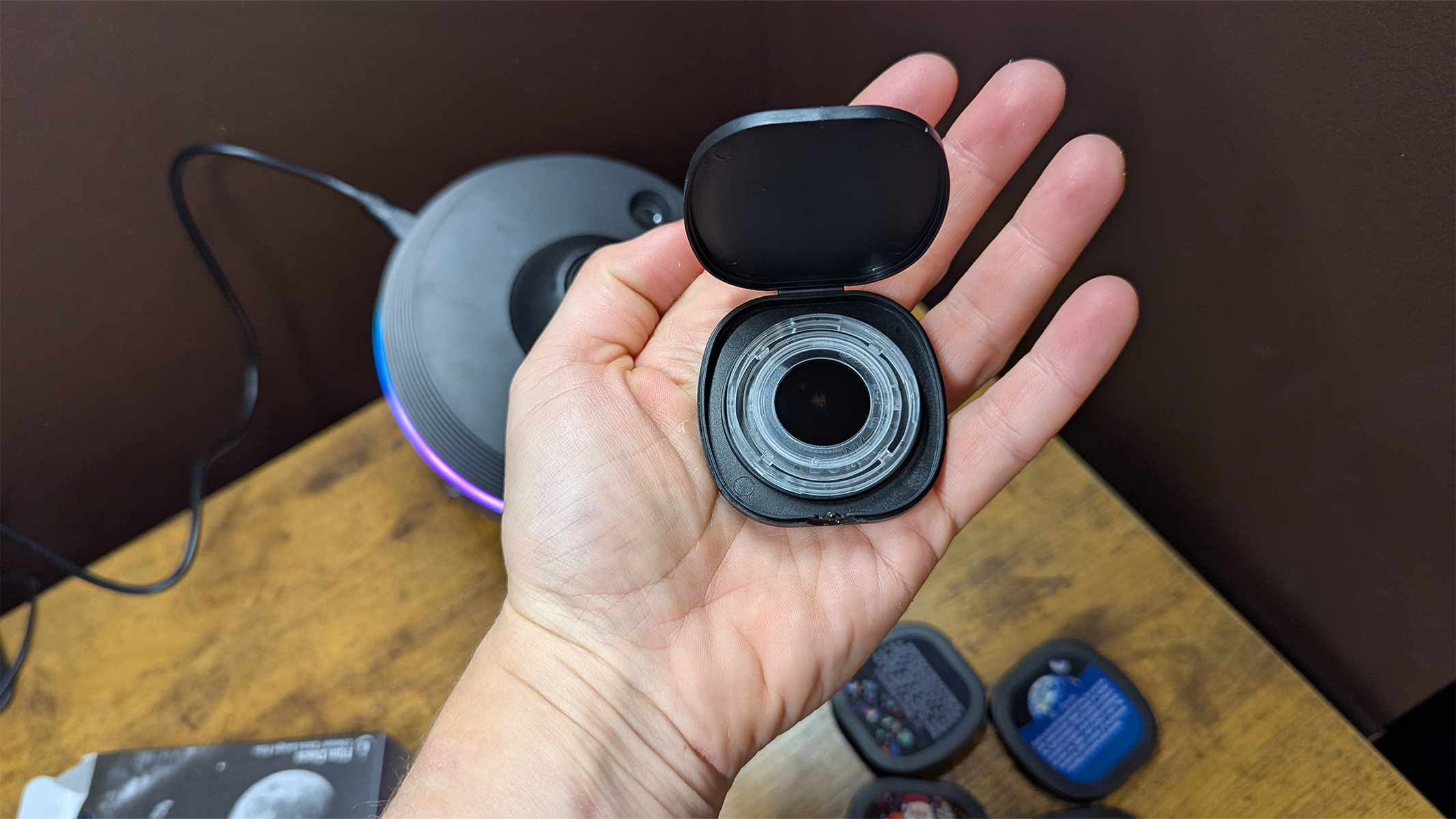
The images the unit projects are bright enough to be used in a dark room on a white surface. However, unlike some models, it struggles if there is a bit of light peeping in or if it's used on a dark surface. Sure, it does the job, but it's not as impressive as the Govee or the Pococo, which display bright, vivid colors.
The projection surface area is also noticeably smaller, and it was trickier to get the projection image to appear exactly how we wanted it. The image was sharp when the projector was at a 90-degree angle to the wall or the ceiling, but at other angles, there was a lot of distortion around the edge of the image.
Ainael Meteor and Galaxy Projector: Functionality
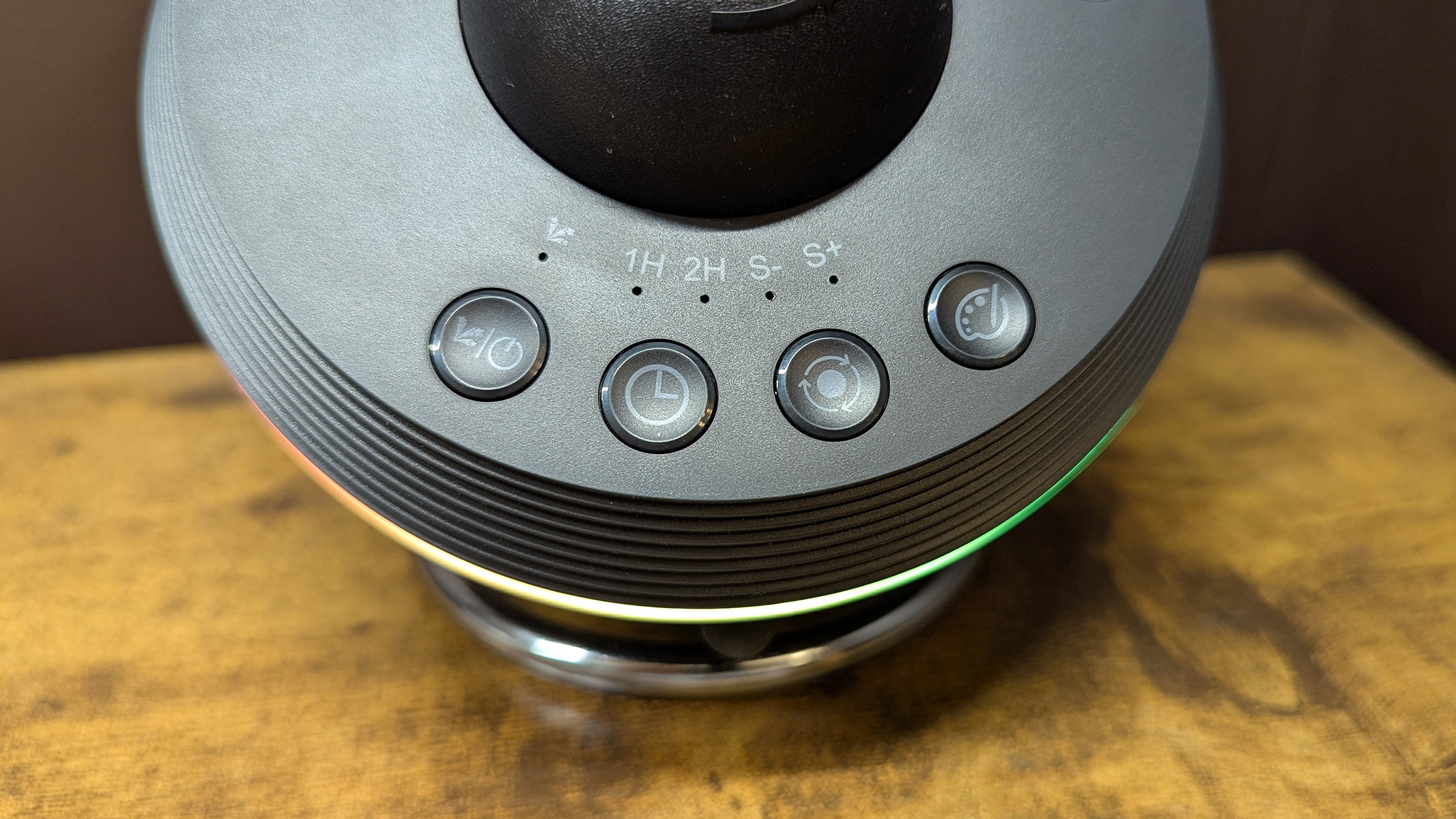
- On-body controls
- No need to download an app
- Not rechargeable
All of the functionality of the Ainael projector is accessed via the on-body controls. There is no app or remote control. That's largely because this is a disc-based device that projects images through the patterned film discs rather than displaying customizable patterns emitted from RGBW lights.
There aren't any lasers, but a "shooting star" can be turned on and off. This sends a small white light across the image at random intervals and can help the user focus; we used it as if we were counting sheep when trying to drift off to sleep.
There isn't a speaker, so there's no music or white noise. But as we've said in previous reviews, the white-noise option is usually wasted on us, and we would rather play our own music, audiobook or podcast to accompany the projections or lighting than have it come from the same unit.
This star projector isn't rechargeable, so you need to position it near a power source. This limits how you can position it, but there are still only a couple of rechargeable models on the market.
Should I buy the Ainael Meteor and Galaxy Projector?
✅ You want to use it as a night-light. The projection can be turned off, leaving only the glow from the light that surrounds the unit, and vice versa.
✅ You don't need all the bells and whistles. There's no fancy app or remote control. You'll need to physically control everything, apart from the preset sleep timer, with buttons on the unit.
❌ You like to customize the lighting patterns and speed. This is a disc-based projector. You can change the physical discs and the speed of rotation, but you can't create your own "moods," for example.
❌ You want a lot of flexibility in how to position it. The projection surface is quite small before the images start to distort, and you need to ensure you're by a power outlet.
If you can get the Ainael Meteor and Galaxy Projector for a reasonable price and you're not looking for anything too fancy, it may be worth buying. It does a good job of projecting the images on the discs onto a surface. It's like having a photograph beamed onto your wall; the image rotates slowly, and you can swap it out by changing the projection disc. This projector didn't particularly wow us, but the night-light functionality might be desirable for a child's room to provide comfort in the dark.
Because numerous distributors sell this model under different guises, the price will likely be vastly different and fluctuate often among them.
For an alternative disc-based projector, we can happily recommend the Pococo Galaxy Star Projector. It doesn't come with as many discs, but it's portable. Plus, the projected images are dazzlingly impressive, so we think it's worth spending a bit more money on it. Additional discs can be purchased separately.
For a customizable light show, consider the Govee Star Light Projector, which impressed us during our recent review. The lights, projection area and, surprisingly, the speaker were excellent. However, the motor is quite noisy when multiple functions are put to work. A quieter choice would be the Cadrim star projector, which we also reviewed recently. It takes up only a fraction of the space as the Govee and sells for around $40, which we think is a good value.
Join our Space Forums to keep talking space on the latest missions, night sky and more! And if you have a news tip, correction or comment, let us know at: community@space.com.

Tantse Walter is a writer, photographer and travel enthusiast that has spent over a decade facilitating global adventurous expeditions. She loves getting into the nitty-gritty of sourcing and planning itineraries, getting out and about in nature, and admiring the night sky.

